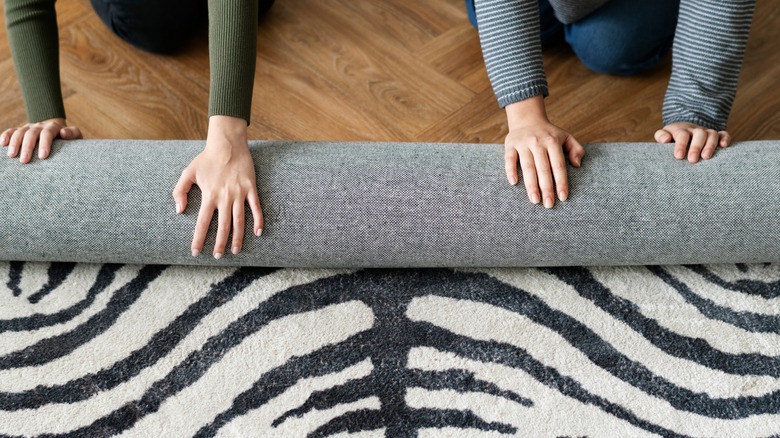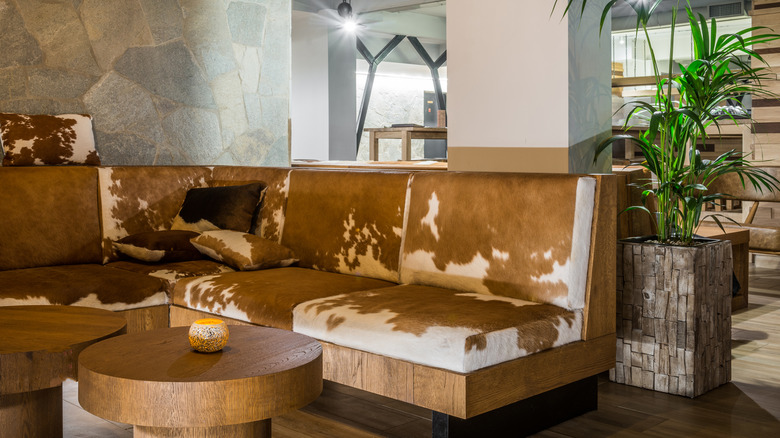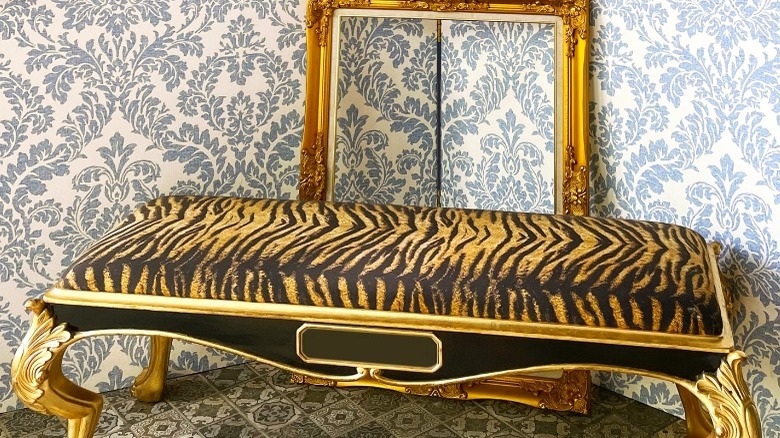Here's The Right Way To Incorporate Animal Print In Your Home
We may receive a commission on purchases made from links.
As the pendulum of interior design trends swings away from streamlined minimalism and toward vibrant, personality-filled room finishes, the public is once again embracing daring patterns and textures (via Vox). This includes the classic yet controversial niche of animal prints, which are perfectly poised to feed into the trend of maximalism and quirky, over-the-top design aesthetics.
While animal prints have gotten a bad rap in years past, they actually have huge adaptability in the realm of design. "When I decorate with animal print, I'm specifically using it to add an element of whimsy, fun, or sophistication," HomeGoods style expert Beth Diana Smith tells The Zoe Report. "Three distinct aesthetics which really show the versatility of animal print and how it can add dimension to a space."
If you're interested in injecting some vim and vigor into your decor, animal prints can be a rich vein to mine. But these audacious patterns can also speed past the line of good taste quickly, so how can you use animal prints without veering into full-on tacky?
With animal print, less is more
There's a reason some people have a knee-jerk dislike for animal prints — they can be eye-glaringly intrusive, especially when overused. That's why, in this case, less is definitely more. Simply because you have one piece of animal print, you don't have to match everything else. Just like no one wants a room that's all in neon yellow, no one wants a room that's wall-to-wall orange tiger stripes. Instead, use your preferred print as a lively accent, the same way you would a vivid color.
You can also be strategic in your choice of animal print. Loud and proud prints like zebra, leopard, giraffe, or even cowhide, may come to mind first. But consider adding a layer of natural interest with more subtle animal prints like antelope, tortoiseshell, or the intricate geometry of reptile patterns. These prints, which tend to incorporate earthy tones, can add a balanced splash of organic movement to your room without overwhelming your other decor.
And if you're so enamored by a particular print that you want to use it on your walls, consider a single accent wall rather than encasing an entire room. While some interior designers are trying to kiss accent walls goodbye in 2022, there are still ways to do them right, and they may be the perfect medium for your animal print dreams. Or if that still feels too bold, consider using framed panels of animal print for a more contained and modern look (via Decor Tips).
Play it up or tone it down with other patterns
Out in nature, the many different patterns covering an animal's hide are usually used as camouflage to blend into an environment (via Michigan State University). So instead of going for an in-your-face, only-print-in-the-room look, why not embrace the same deep sense of natural integration and belonging by pairing a touch of animal prints with other patterns in your interior design? Thoughtful pattern mixing can make your favorite animal prints seem right at home, whether you want to emphasize them or downplay them.
"When pairing, focus on the color of the patterns to help subdue an animal print. For instance, if you use a blue paisley with a blue leopard print, that will highlight the print," Smith explained to The Zoe Report. "If you want to subdue the animal print, use a more neutral or light color instead." Of course, maybe you're going for that maximalist aesthetic, in which case you should pick patterns that enhance the energy of your animal prints rather than taming it — i.e., that blue paisley and leopard combo.
Ultimately, the trick to pattern mixing of any kind is balance. For best results, try mixing a large-scale pattern with a smaller scale one, or a busy print with something more spacious (via MasterClass). And when in doubt, stick to similar color profiles. Since you're already creating contrast in your patterns, there's no need to double down with contrasting hues.


